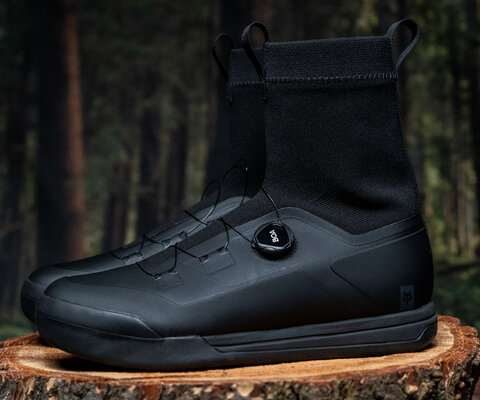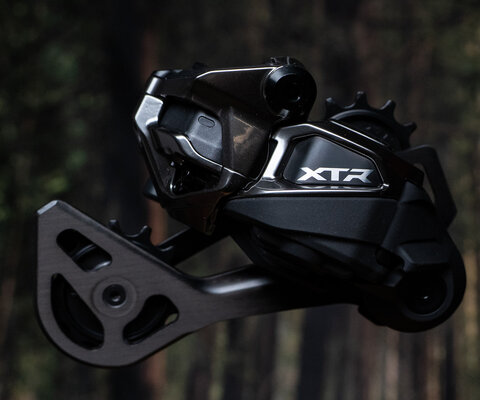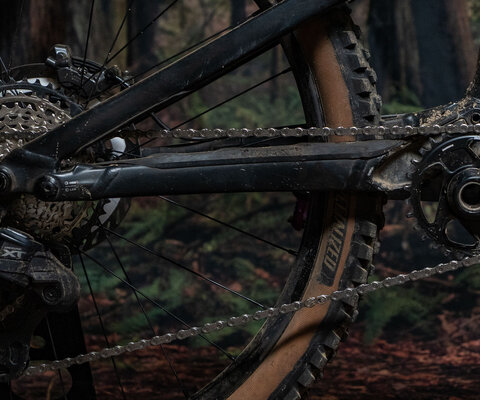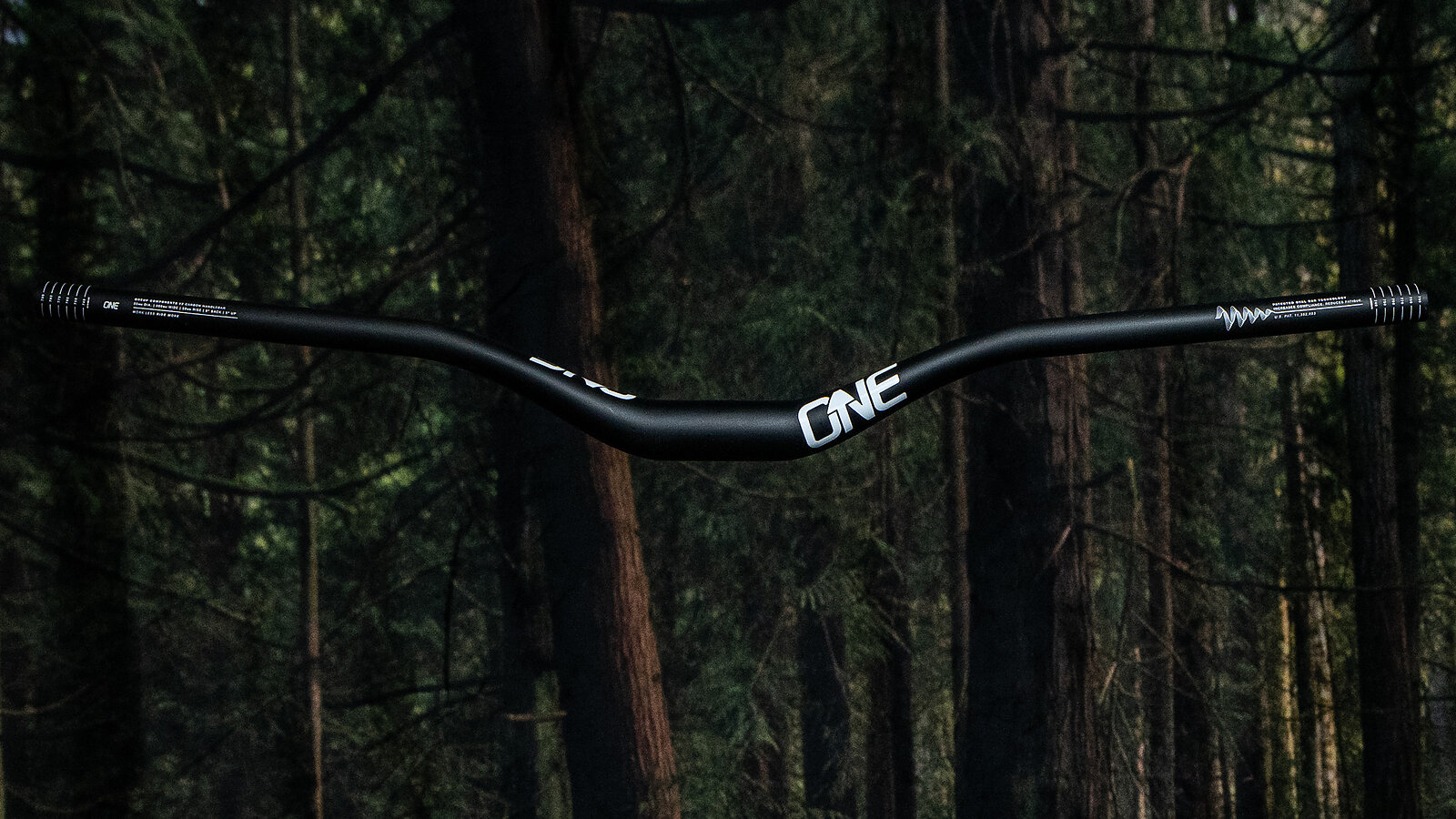
OneUp V2 Carbon Handlebar Component Review
Words and Photos by Cy Whitling
New options to make your bike your own.
Earlier this month, Squamish-based brand OneUp Components released the second version of its carbon handlebar. True to form, it’s got a straightforward name: V2 Carbon Handlebar. And unsurprisingly, it’s quite of-the-moment with a higher rise option, and a new, narrower version for more compliance.
I’ve been riding with the new 50-millimeter rise V2 Carbon Handlebar, so we’ll cover its performance, as well as why it matters in the context of the greater OneUp parts lineup.
OneUp V2 Carbon Handlebar Overview
- Diameter: 35 mm
- Rise: 20, 35 or 50 mm
- Width: 800 or 760 mm
- Upsweep/Backsweep: 5/8°
- Weight: 255 g (50 mm rise, 800 mm width)
- Price: $159.99
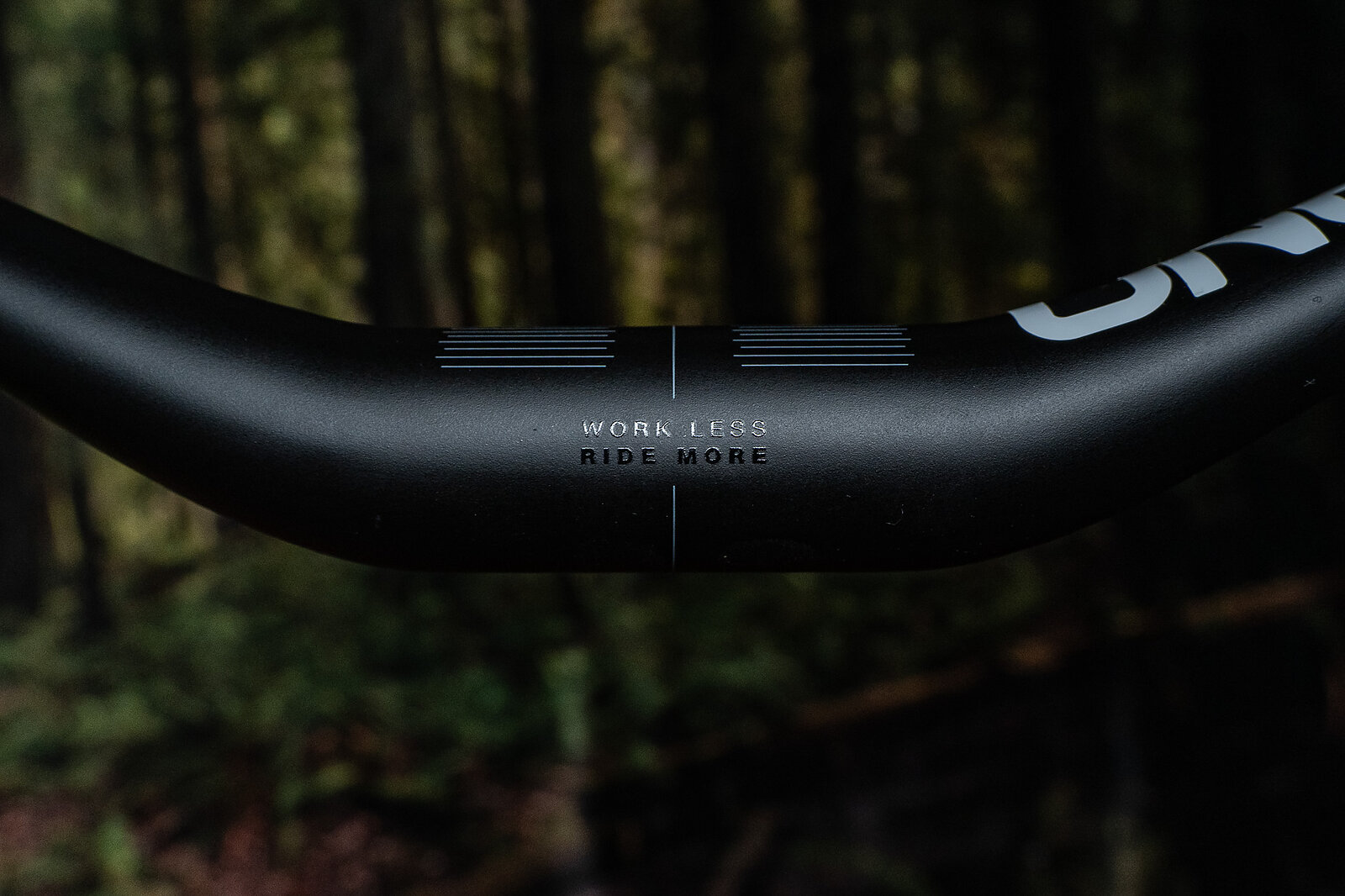
The V2 brings two new talking points to OneUp’s bar range. First, the 50-millimeter rise version is one of the taller carbon bars on the market. Second, the new bar is more compliant, and OneUp has achieved that compliance in two ways. First, the oval “flattened” portion of the bar has been dialed in for more downward flex. OneUp has patented this design, and they’re continuing to refine it. Second, the V2 bar is available in a dedicated 760-millimeter width, with a dedicated lighter flex pattern.
This isn’t an entirely new concept. The width of the bar determines how much of a lever is acting on the flexing portion. Narrower bars equal less leverage and less compliance. Combine that with the fact that often lighter folks are running those narrower bars, and you get a harsher ride feel for smaller people. So OneUp says that the new 760-millimeter width option is a third more compliant than the old 800-millimeter bar cut down to 760 millimeters would be. And yes, internet grumps, 31.8 millimeter bars exist. But options are a good thing!
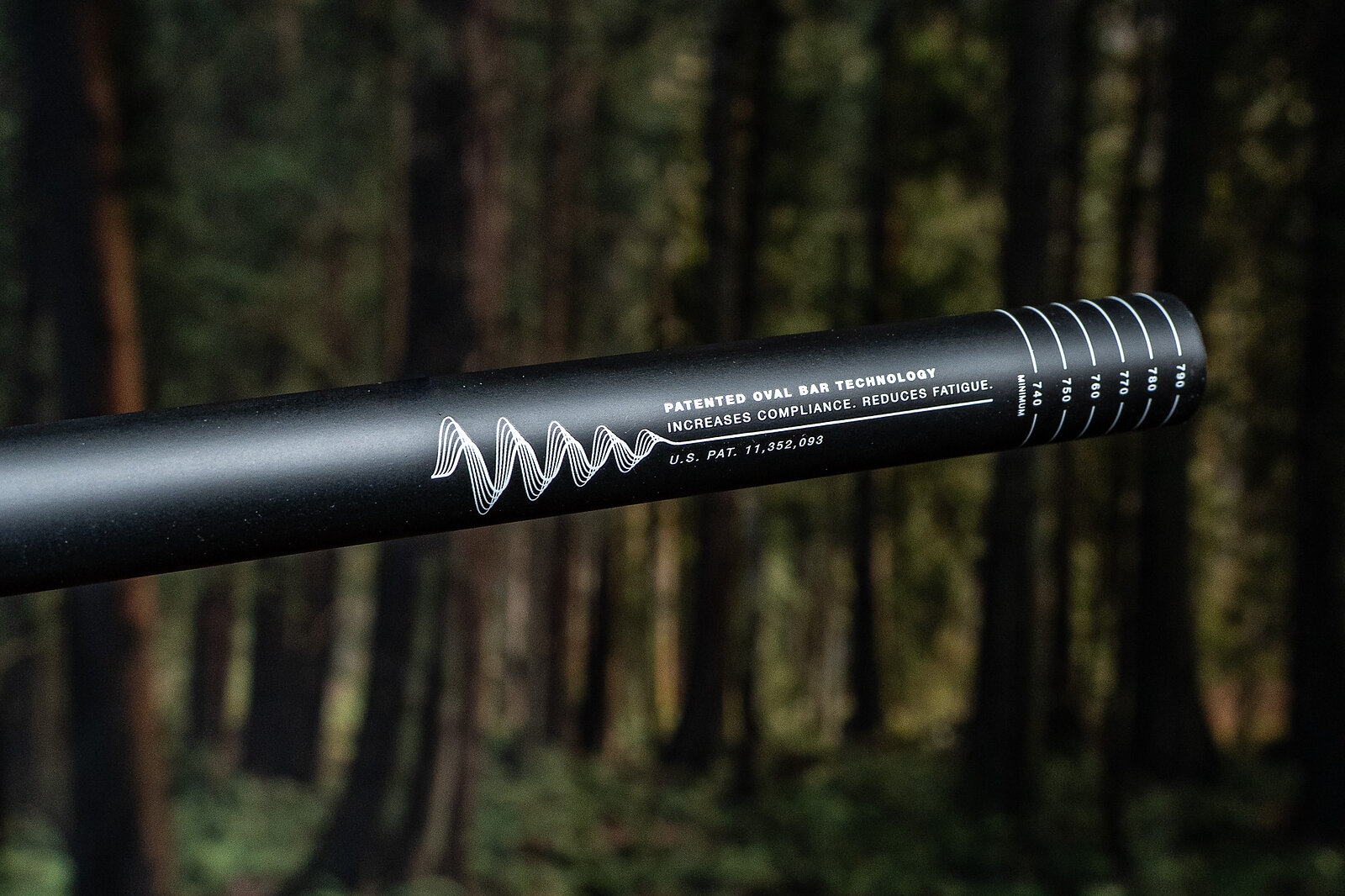
Features and Performance
I’ve been using the 50-millimeter rise bar in its uncut 800-millimeter width. It’s got cut lines marked to trim it down to 740 millimeters, as well as lines to help you set up your bar roll. Beyond that, it’s pretty simple. Stick it in your stem, torque it down, install your grips and controls, and ride your dang bike!
And ride my dang bike I have. For many years I defaulted to the OneUp V1 carbon handlebar, so I’m quite familiar with its performance. I only abandoned it in search of a higher stack, which this new version delivers. The short verison: all the good things about the V1, with more rise.
I’ve ridden a fair number of “complaint” bars, and generally, I notice “bad” compliance more than the good kind. I’m a heavy dude (200 pounds) who rides fairly front heavy, and makes mistakes that involve twisting, humping movements through my bars pretty regularly. That means that I’m a big fan of 35-millimeter bars. I do not like uncertainty or vagueness through my cockpit, and I’ve ridden a few carbon bars that have delivered exactly that. This new OneUp bar feels stiff and secure in all the important directions, while still being very comfortable through chunder.
Right now, this is the gold standard for bar feel that I’ll be comparing all other bars that tout their compliance to. That, combined with the fact that the rise and geometry work really well with my default riding position, means that this bar will probably make an appearance on review bikes in the future. While I always start out on new bikes with their default components, I’ll occasionally swap to higher rise bars to see if they unlock new angles on the bike. There’s a lot to be said for feeling comfortable or “at home” on a bike in order to really get a feel for its performance, and that’s something that OneUp Components has always facilitated for me.

The Broader Context
OneUp has always been my first stop when I’m setting up a new personal bike. Back in the day when large bikes came with 150-millimeter dropper posts I’d immediately take my measurements and figure out the longest OneUp dropper I could fit in. And usually that dropper order would include a tool for the steerer tube, some new pedals, a carbon V1 bar, and maybe some grips. All that to say, for a long time when I’ve wanted to make a bike feel “mine” I’ve swapped on OneUp’s parts.
These new bars continue that legacy. They allow you to adjust the fit of your bike for your specific body type. There’s a reason that I have a couple of OneUp droppers on hand to swap into review bikes that come with short posts from the factory. And it’s the same reason that I’ll have these new 50-millimeter rise V2 Carbon Handlebars on hand to swap onto any bikes that would benefit from a higher stack. As consumers, we don’t have to suck it up and ride bikes that could fit us better. OneUp sells the tools to dial in that fit, they perform well, and they don’t break the bank.
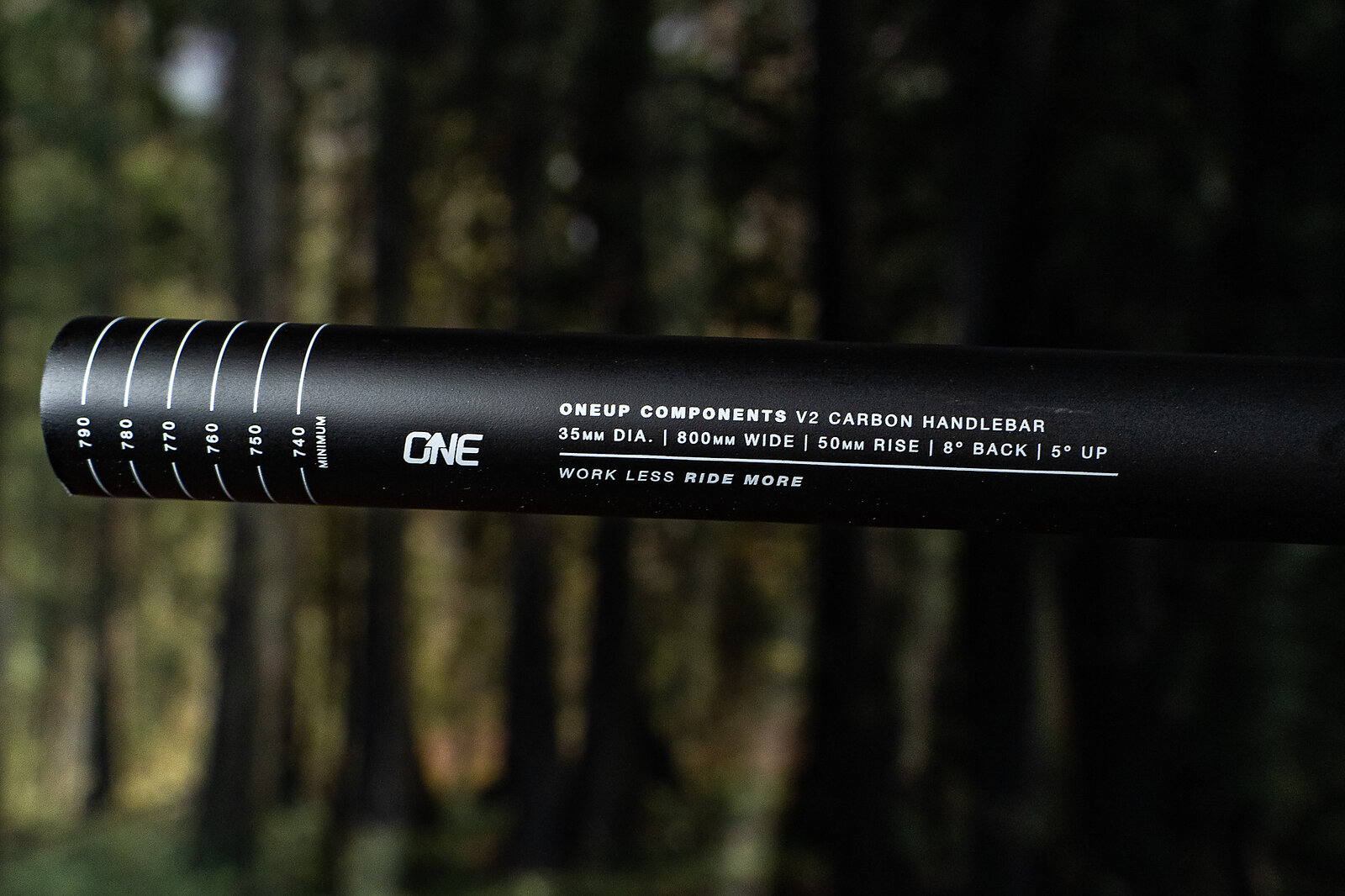
For Now
At the surface level, these bars deliver exactly what they advertise: more rise, more compliance, the same trustworthy performance. But they also add another tool to the arsenal of a brand dedicated to helping customers tweak and experiment with their bikes. Looking to try a higher rise bar? These are a great place to start.
Learn more: OneUp Components
